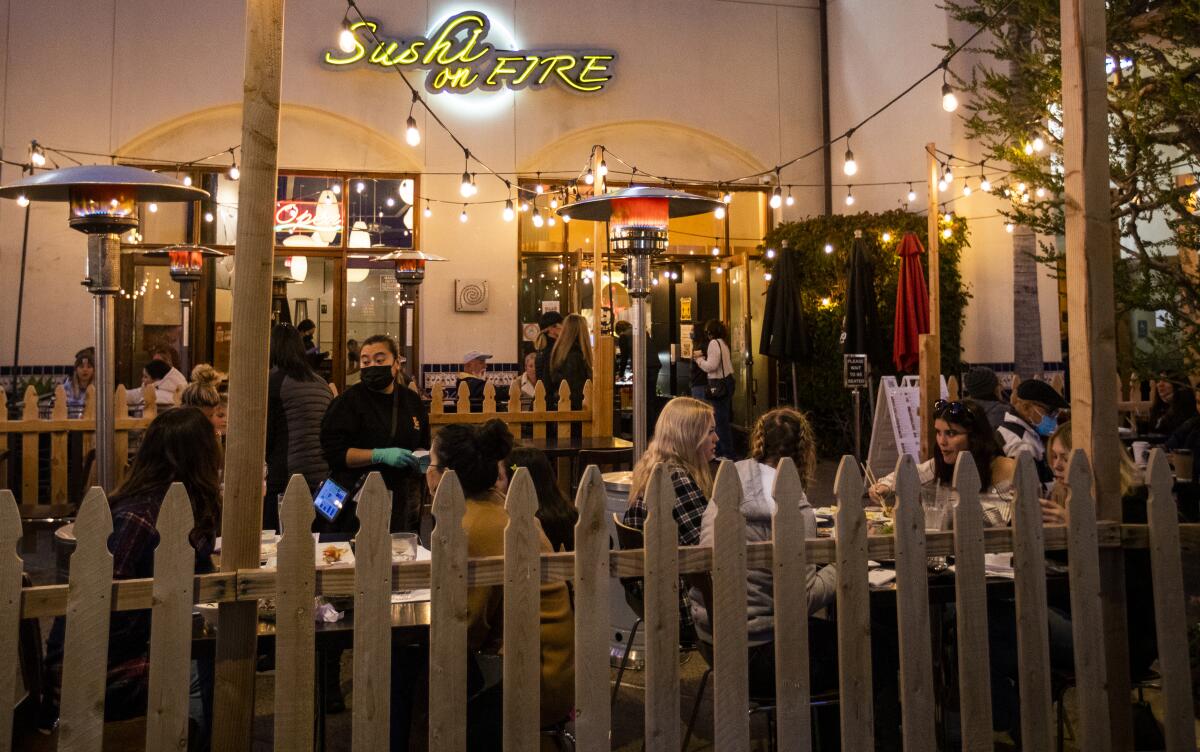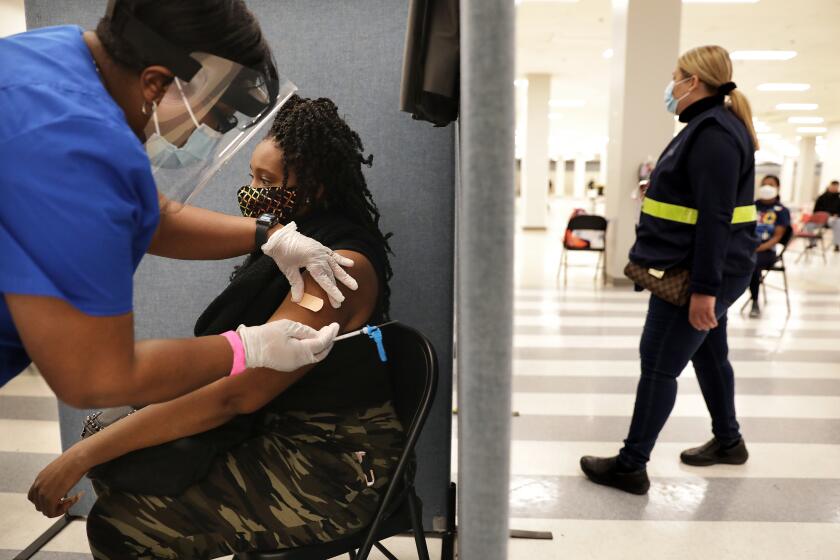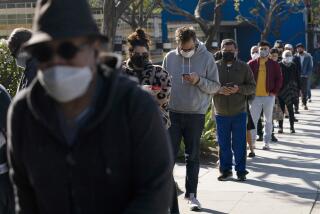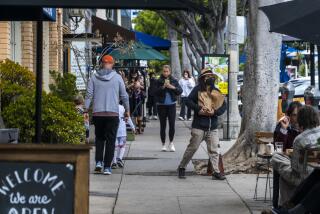Indoor dining still risky and eating outside is safer, officials warn as L.A. restaurants reopen

Even with indoor dining returning in many parts of Southern California, officials are urging caution because of the ongoing COVID-19 risk.
Dr. Muntu Davis, the Los Angeles County health officer, cautioned that eating in a restaurant’s indoor dining room is still risky. If eating at a restaurant, dining outdoors remains safer, he said Friday.
“People are susceptible to this virus. There are variants that are circulating in our county,” Davis said. “Many of those can be more easily transmitted, and some may be causing more severe disease.”
The risk of dining indoors at restaurants is one reason why L.A. County is requiring that those eating together live in the same household. It is permissible, however, for people from up to three households to dine at the same table outdoors.
Davis said it’s probably better for people who are at high risk for severe illness and death from COVID-19 to avoid dining inside at a restaurant. It would be prudent to “take some caution as we continue to move forward,” he said.
Los Angeles County can resume indoor dining, reopen movie theaters, indoor gyms and museums as early as Monday under the new rules.
Health experts say it remains to be seen whether the wider reopening of multiple business sectors will cause a bump in cases.
“If this is the right decision, we’ll see,” Davis said. “It really depends on what each and every one of us [and] what each and every business does as well.”
That’s why it’s so important that people move with caution and not simply assume that because businesses are opening up, “everything is just safe and without risk,” he said.
If everyone complies with mask-wearing rules and ramped-up restrictions, there is a chance the reopenings can work without a surge in hospitalizations and a new order by the state to shut businesses down again, Davis said.
If those safety guidance are followed, “we have a chance of getting through this without seeing significant increases [of disease], without getting to a point where hospitalizations start to go up and possibly [without] having the state say, ‘OK, we need to shut things down again.’ ”
Davis’ warning comes as California has met its initial target for administering more COVID-19 vaccines in the hardest-hit and most disadvantaged areas. The milestone marks the state’s effort to more equitably distribute the doses and also clears the way for significant economic reopenings.
With 2 million doses now having gone into the arms of residents living in targeted communities statewide, officials have loosened the criteria necessary for counties to exit the strictest category of California’s four-tier reopening blueprint.
In doing so, they’ve set the stage for a wider unlocking of the state’s battered economy than has been seen in months. Thirteen counties — Los Angeles, Orange, San Bernardino, Amador, Colusa, Contra Costa, Mendocino, Mono, Placer, San Benito, Siskiyou, Sonoma and Tuolumne — will exit the proscriptive purple tier effective Sunday, according to the California Department of Public Health.
And another 13 counties — Sacramento, San Diego, Riverside, Ventura, Kings, Lake, Monterey, San Joaquin, Santa Barbara, Sutter, Tehama, Tulare and Yuba — are poised to join the less strict red tier as soon as Wednesday, provided their coronavirus metrics stay steady.
Counties in the red tier will be permitted to resume indoor dining at restaurants and movie theater showings at 25% capacity, welcome students in grades 7 through 12 back for in-person classes, reopen indoor gyms and dance and yoga studios at 10% capacity, and expand the maximum allowable capacity at nonessential stores and libraries within the next few days.
Museums, zoos and aquariums also can reopen indoor operations in the red tier, at 25% capacity.
Amusement parks can also reopen at 15% capacity with other modifications in red tier counties starting April 1. Long-closed attractions such as Disneyland, Universal Studios, Knott’s Berry Farm and Six Flags Magic Mountain are weeks away from again welcoming visitors — who must be California residents — after being closed for nearly a year.
More to Read
Sign up for Essential California
The most important California stories and recommendations in your inbox every morning.
You may occasionally receive promotional content from the Los Angeles Times.













